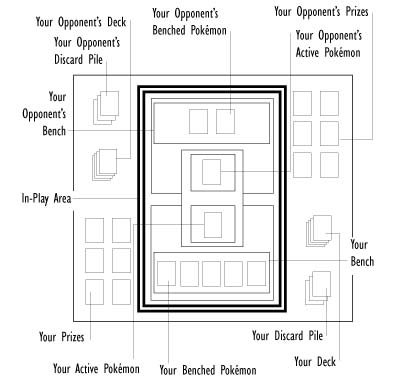|
|
||||||||||||||||
|
|
||||||||||||||||
|
|
||||||||||||||||
|
|
|
|
||||||||||||||
 |
||||||||||||||||
 |
|
 |
||||||||||||||
|
|
||||||||||||||||
Nintendo Tips
Trading Card
Game
Deck
Garage
Cartoon/Anime
Advertise With Us
|
Pokemon TCG Basic Rules
But what is a Pokémon, you ask? "Pokémon are incredible creatures that share the world with humans," says Professor Oak, the leading authority on these monsters. "There are currently 150 documented species of Pokémon." And your incredible task is to capture, train, and fight with all of them! It's not easy, but once you get the hang of it, you'll know exactly which Pokémon to choose for a battle. On your way to the top, you'll perfect your skills by using your Pokémon to fight against other Pokémon trainers. Each Pokémon has its own special fighting abilities. Though they come in many shapes and sizes, even the smallest Pokémon can launch a fierce attack. Some Pokémon grow, or evolve, into even more powerful creatures. But don't worry-even your toughest Pokémon will be loyal to you! Carry your Pokémon with you, and you're ready for anything! You've got the power in your hands, so use it! If you play the Pokémon Game Boy® game or watch the animated Pokémon show, you already know the basic ideas and goals of the trading card game! Gotta Catch 'Em All! In the Pokémon trading card game, one of your goals is to collect each of the cards, similar to your goal of collecting each of the Pokémon in the Game Boy game. But not all Pokémon cards are as easy to catch as others. The Energy cards are the most basic and most common kind of cards. Your Pokémon cards, Evolution cards, and Trainer cards come in four different varieties: common cards are marked in the bottom right-hand corner with a
If you're mostly interested in playing, there are always good cards appearing in all levels of commonality. (Many of the most popular Pokémon-such as Pikachu, Charmander, Squirtle, and Bulbasaur-are common cards.) This ensures that players who buy different amounts of cards can still play and have a fun and fair game. What Do You Need to Play? Well, you and your opponent will each need your own deck of 60 cards, a coin to flip, and some counters to mark damage to your Pokémon. You can use pennies or whatever else you want to if you run out of counters. How to Win In Pokémon, you can win three different ways. First, at the start of the game, you set aside 6 of your cards as Prizes. Every time one of your opponent's Pokémon is Knocked Out, you take 1 of your Prizes and put it into your hand. When you've taken all 6 of your Prizes, you win the game! (You'll win most of your games this way.) Second, you also win if your opponent doesn't have an Active Pokémon (or a Benched Pokémon to replace it with) at the end of any turn. And finally, you win if your opponent's deck is out of cards at the start of his or her turn. What's the Pokémon Game Like You and your opponent take turns playing cards from your hands. Some of these cards will be Basic Pokémon cards, Evolution cards that can grow them into bigger and stronger Pokémon, or Energy cards that help Pokémon fight. You can also play Trainer cards-these will do lots of different things to help you win. You might have several Pokémon on the table at once, but only one of them (called your "Active Pokémon") will be fighting for you at a time. The rest will be sitting on your Bench in case you need them to fight. Every turn, you'll have a chance to attack with your Active Pokémon, which will either do damage to your opponent's Active Pokémon (called the "Defending Pokémon" during your attack) or do something else to it, like making it Asleep, Confused, Paralyzed, or Poisoned. If your attack does enough damage to Knock Out the Defending Pokémon, you get to take 1 of your 6 Prizes. When you take your 6th Prize (when 6 of your opponent's Pokémon have been Knocked Out), you win! What Are the Different Kinds of Cards? Basic Pokémon are your most important cards. They fight for you turn after turn against your opponent's Pokémon. Evolution cards are played on top of your Basic Pokémon (or sometimes on top of other Evolution cards). They make your Pokémon bigger and more powerful. Energy cards are attached to your Pokémon to give them the Energy they need to use their attacks. Trainer cards are one-shot cards that do something once and are then discarded. Starting the Game ·Shuffle your deck and draw a starting hand of 7 cards. Put the rest of your deck face-down in front of you.
·You and your opponent each choose a Basic Pokémon card (it'll say "Basic Pokémon" in the upper left-hand corner) from your hands and put them face-down. These will be your starting Active Pokémon. ·Each player may, if he or she wishes, choose up to 5 Basic Pokémon from his or her hand and put them face-down on his or her Bench (this is where Pokémon wait when they're not the Active Pokémon). ·Put the top 6 cards of your deck face-down in front of you. These are your Prizes, which you take when your opponent's Pokémon are Knocked Out. You can't look at a Prize card until you take it. ·Flip a coin to decide who goes first. You can use your special Pokémon coin, if you have one. ·Flip over all the Active and Benched Pokémon that have been put on the table. How Your Play Area Should Look
Let's Play! As you play, you and your opponent take turns. During your opponent's turn, you don't do anything except replace your Active Pokémon if it gets Knocked Out (see below). During your turn, go through the steps below. What Can You Do during Your Turn?
1) DRAW a card You always begin your turn by drawing a card. (If your deck is empty at the beginning of your turn, the game is over, and your opponent wins.) 2) DO ANY of the following in any order and as often as you like: Put a Basic Pokémon on the Bench Choose a Basic Pokémon from your hand and put it face-up on your Bench. You can have no more than 5 Pokémon on your Bench at any time, so you can only put a new Basic Pokémon there only if your Bench has 4 or fewer Pokémon on it. Evolve a Pokémon in play If you have a card in your hand that says "Evolves from so-and-so" and so-and-so is the name of a Pokémon you already have in play, you may play that card in your hand on top of the Pokémon so-and-so. This is called "evolving" a Pokémon. Example: Juliane has a card called Ninetales that says "Evolves from Vulpix," and she has a Vulpix card in play. She may play the Ninetales card on top of the Vulpix card. When a Pokémon evolves, it keeps all cards attached to it (Energy cards, Evolution cards, etc.) and any damage it might already have, but the old attacks and Pokémon Powers of the Pokémon it evolved from go away. All other things about the Pokémon go away-Sleep, Confusion, Paralysis, Poison, or anything else that might be the result of an attack some Pokémon made earlier.
Attach an Energy card to a Pokémon Take an Energy card from your hand and attach it to one of your Pokémon in play (put it under the Pokémon card).
Play a Trainer card When you want to play a Trainer card, do what it says, then put it in the discard pile. Retreat your Active Pokémon You may switch your Active Pokémon with one of the Pokémon on your Bench. To do this, you must discard Energy attached to the Active Pokémon equal to the Retreat Cost that's written in the lower right-hand corner. (You'll read more about costs in the "Attack with Your Active Pokémon" section.) If you can't do that, then you can't retreat. Pokémon with no Retreat Cost don't need to get rid of any Energy when they retreat-they can retreat "for free." A Pokémon that is Asleep or Paralyzed can't retreat. A Confused Pokémon can try to retreat, but it might not succeed. (Why this might happen will be explained later on in the rules.) When your Active Pokémon goes to your Bench (whether it retreated or got there some other way), it keeps any Energy cards, any Evolution cards, and any damage counters it might already have. All other things about the Pokémon go away-Sleep, Confusion, Paralysis, Poison, or anything else that might be the result of an attack some Pokémon made earlier. All of these things go away. If you retreat, you can still attack that turn with the new Active Pokémon. Use a Pokémon Power Some Pokémon have a special "Pokémon Power" that they can use when they're in play. (Remember, Benched Pokémon are "in play," too.) Many of these Powers can be used before you attack. Each Pokémon Power is different, though, so you should read carefully to see how each Power works.
3) ATTACK with your Active Pokémon If you wish, you may have your Active Pokémon attack your opponent's Active Pokémon (also called the "Defending Pokémon"). This is the last thing you can do during your turn-you can't do anything else afterward. You can only attack one time during your turn, and your Pokémon can only use one of its attacks each turn. To attack, just tell your opponent which one of your Pokémon's attacks you're using. You can only use an attack if you have at least the required amount of Energy attached to your Active Pokémon.
·Energy Any kind of Energy-
Damage When you attack, read the attack you're using and do what it says. For each 10 damage a Pokémon takes, put one damage counter on it. If a Pokémon ever has total damage at least equal to its Hit Points (for example, 4 or more damage counters on a Pokémon with 40 HP), it's immediately Knocked Out. Weakness and Resistance Some Pokémon have a Weakness or Resistance to Pokémon of certain other types. (For example, Charmander has a Weakness to
What happens when your Pokémon is Knocked Out? Whenever one of your Pokémon is Knocked Out, put its Basic Pokémon card and all cards attached to it (Evolution cards, Energy cards, etc.) in your discard pile. Your opponent then chooses one of his or her Prizes (even if you Knocked Out your Pokémon yourself!) and puts it into his or her hand. After that, you must replace your Active Pokémon with a Pokémon from your Bench. (If you can't do this because your Bench is empty, you lose.) If your Active Pokémon and your opponent's Active Pokémon are Knocked Out at the same time, the player whose turn it is replaces his or her Pokémon last. The player whose turn it is chooses his or her Prize last as well. 4) Your turn is OVER now Sometimes there are things to do after your turn is over but before your opponent's turn begins. After you've done those things, your opponent's turn begins. What Happens after Each Player's Turn? After each player's turn, if either player's Active Pokémon is Poisoned, it'll take damage, and if it's Asleep or Paralyzed it might recover. Then the next player's turn begins. How Do Sleep, Confusion, Paralysis, and Poison Work? Some attacks cause the Defending Pokémon to be Asleep, Confused, Paralyzed, or Poisoned. These things don't happen to a Benched Pokémon, only to an Active Pokémon-in fact, if a Pokémon goes to the Bench, these things are removed from it. And evolving a Pokémon also means it's no longer Asleep, Confused, Paralyzed, or Poisoned. AsleepIf a Pokémon is Asleep, it can't attack or retreat. As soon as a Pokémon is Asleep, turn it sideways to show that it's Asleep. After each player's turn, flip a coin. On a heads, the Pokémon wakes up (turn the card back right-side up), but on a tails it's still Asleep, and you'll have to wait until after the next turn to try to wake it up again. ConfusedIf a Pokémon is Confused, you have to flip a coin whenever you try to attack with it or whenever you try to make it retreat. Turn a Confused Pokémon with its head pointed toward you to show it's Confused. When you try to make a Confused Pokémon retreat, you first have to pay the Retreat Cost by discarding Energy cards. Then flip a coin. On heads, you retreat the Pokémon as normal. On tails, the retreat fails, and that Pokémon can't try to retreat again that turn. When you attack with a Confused Pokémon, you flip a coin. On heads, the attack works normally, but on tails your Pokémon attacks itself with an attack that does 20 damage. (If your Pokémon has a Weakness or Resistance to its own type, or if there's some other effect that would alter the attack, apply these things as usual.)
If a Pokémon is Paralyzed, it can't attack or retreat. Turn the Pokémon sideways to show it's Paralyzed. If an Active Pokémon is Paralyzed, it recovers after its player's next turn. Turn the card right-side up again.
If a Pokémon is Poisoned, place a "poison marker" on it to show that it's Poisoned. As long as it's still Poisoned, the Pokémon takes 10 damage after each player's turn, ignoring Weakness and Resistance. If an attack would Poison a Pokémon that's already Poisoned, it doesn't get doubly Poisoned; instead, the new Poison condition replaces the old one.
Can Your Pokémon Be Asleep and Confused at the Same Time? If a Pokémon is Asleep, Confused, or Paralyzed, and a new attack is made against it that causes it to become Asleep, Confused, or Paralyzed, the old condition is erased and only the new one counts. But these three conditions are the only attack effects that erase each other. For example, a Pokémon can be confused and Poisoned at the same time.
Why Are There So Many Different Cards? One of the things that makes Pokémon different from other card games is that it's a trading card game. This means that there are lots of different cards that you can collect and trade with your friends. Also, you aren't limited to just playing the decks you buy-you can use all the different cards you have to create totally new decks! A lot of the fun of a trading card game comes from making different decks that use different strategies. How Do You Make a New Deck? Your deck has to have exactly 60 cards, and you can't have more than 4 of any one card other than basic Energy cards in your deck (the basic Energy cards are To make a new deck, first notice that all the cards other than the Trainers have different Energy types on them. Your deck should probably include one or two of the basic Energy types, and you can choose to add some Colorless ( Once you've chosen your Energy types, pick Pokémon and Trainer cards that work well together. Do you want to build up big Pokémon to crush your opponent? Then put in a lot of Evolution cards and some Trainers like Pokédex that help you find those Evolution cards. Do you want to do a lot of damage to your opponent's Pokémon very quickly? Then pick Pokémon that don't need to be evolved and cards like PlusPower that do extra damage. After you've made your deck, play it as often as you can against as many other decks as you can. See what works and what doesn't, and then make changes. If you keep working at it, you'll have a deck that will show everyone you're the greatest Pokémon Master of all time! Pojo.com is here to provide guidance to all Pokemon trainers out there. Whether it's the Gameboy Game, N64 or the Trading Card Game, PoJo.com provides all the wisdom you desire. If you have cool game tips, a killer deck, or breaking news ... send them to us. We'll post it on the site ... and give you all the credit.
|
|
||||||||||||||
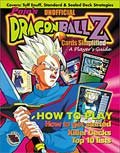
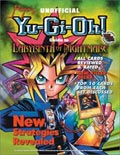

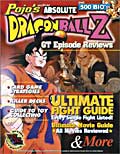
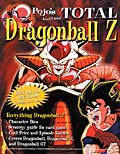
 Welcome to the world of Pokémon, a special place where people just like you train to become the number-one Pokémon Master in the world!
Welcome to the world of Pokémon, a special place where people just like you train to become the number-one Pokémon Master in the world!